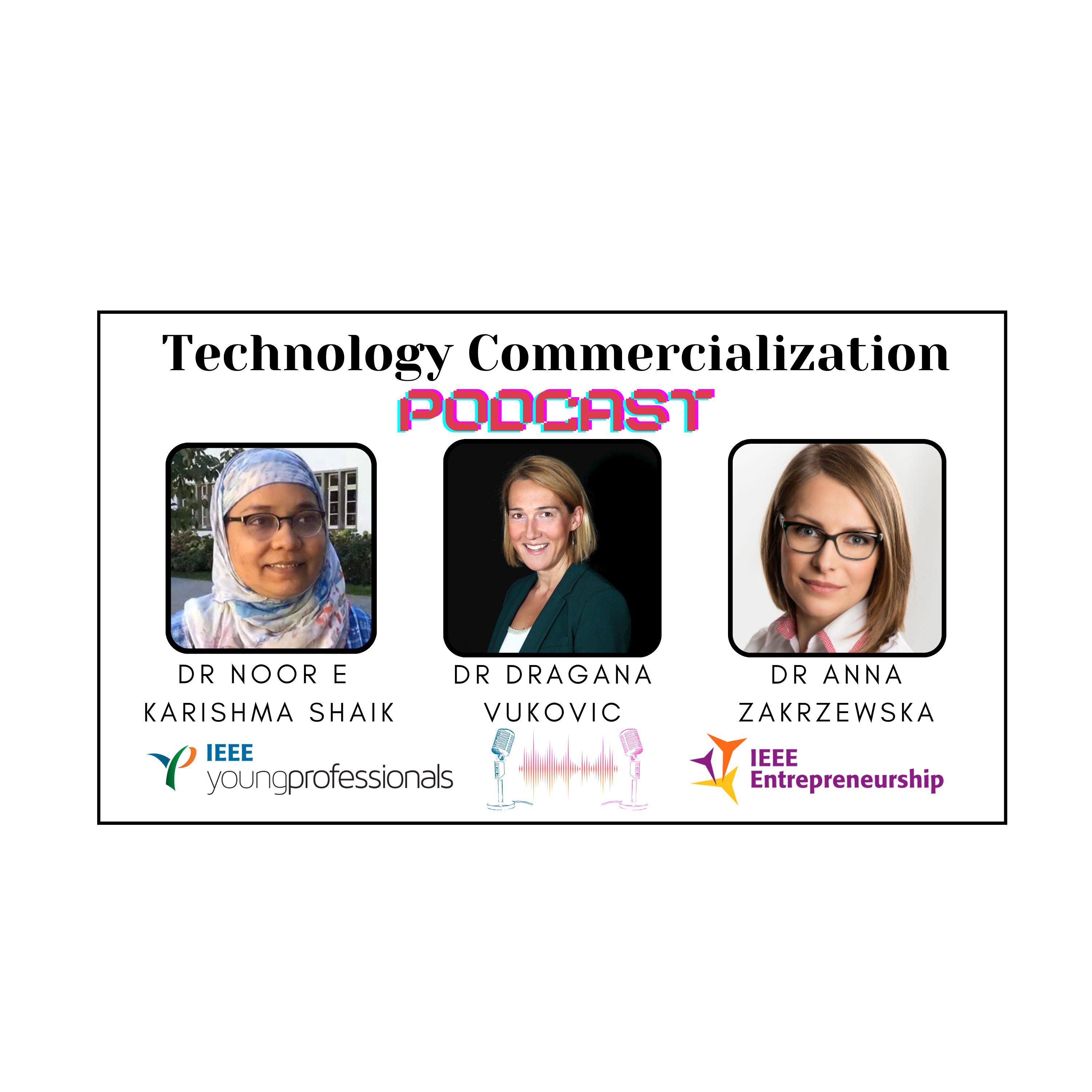Summary
This podcast is aimed at young professionals who want to learn about commercializing technology. Over a series of episodes, we aim to cover key topics such as intellectual property, funding for startups, and marketing strategies. We will also provide practical advice on overcoming common challenges in technology commercialization and building a network of industry contacts. This podcast is organized by IMPACT Blog Team at IEEE Young Professionals in collaboration with IEEE Entrepreneurship Society.
Technology Commercialization Series: Ideas, Protection, and IP Development
In the second podcast of the Technology Commercialization series, Dr Noor E Karishma Shaik, the IEEE YP Communications coordinator, is speaking with Dr Anna Zakrzewska, Senior Principal Engineer at Dell Technologies, and Dr Dragana Vuković, Patent Attorney at Zacco – 360° Intellectual Property. The discussion centers on the protection of ideas, intellectual property (IP) development, and safeguarding inventions. Anna holds numerous technology patents in wireless communication, systems engineering, and network management, while Dragana has extensive experience on mitigating IP risks for technologies in optics, medical devices, and telecommunications. This podcast episode offers invaluable insights into technology commercialization and IP protection, providing useful guidance for anyone embarking on an innovation journey. Please listen to the podcast here:
The important takeaways from this conversation are listed below:
Understanding Patents, Trademarks, Licenses, and Copyrights
Dragana begins by explaining the differences between patents, trademarks, licenses, and copyrights. Patents protect technical inventions, trademarks guard symbols, names, and slogans associated with goods and services, and copyrights safeguard literature, music, art, and other intellectual properties.
The Importance of Timely Patent Applications
Anna emphasizes the importance of filing patent applications promptly, debunking the misconception that a functioning product or prototype is necessary before filing. She clarifies that an idea can be patented as soon as it is finalized.
Patenting vs. Open Sourcing: A Strategic Decision
Dragana and Anna explain that the decision to patent work or open source it depends on various factors, including business strategy, future ideas, and commercial constraints. While a patent provides exclusivity, it’s possible to open source the associated code. However, once the code is open-sourced, it can no longer be patented.
Considerations in Patenting a Software Application
They clarify that when patenting a software application, it’s not the code itself, but the algorithm or method that the software implements, that’s protected.
Avoiding Common Pitfalls in IP Protection
Dragana highlights the importance of not publishing work before filing a patent application and ensuring confidentiality agreements with collaborators or employees.
Striking a Balance: Protecting IP and Involving Investors
Dragana advises sharing only essential information with potential investors or business partners to balance the need to protect intellectual property and involve them.
The podcast concludes with advice for listeners who are inventors or entrepreneurs. Dragana and Anna emphasize the importance of confidentiality agreements, filing a patent application as early as possible, and working with a patent attorney to ensure the broadest possible protection for an idea. They also stress the importance of continually monitoring your patent portfolio and aligning it with your business priorities and market changes.
Stay tuned for the next episode of the podcast, where the topic of investments and accelerator programs will be explored further.
Article Contribution: Noor E Karishma Shaik (IEEE YP Communications Coordinator) is currently working as a Postdoctoral Researcher at University of Melbourne.






